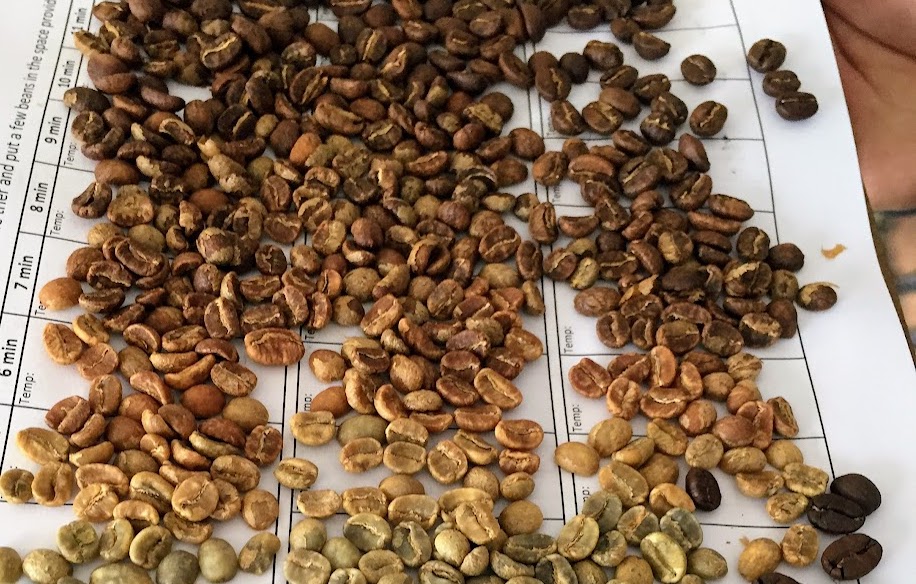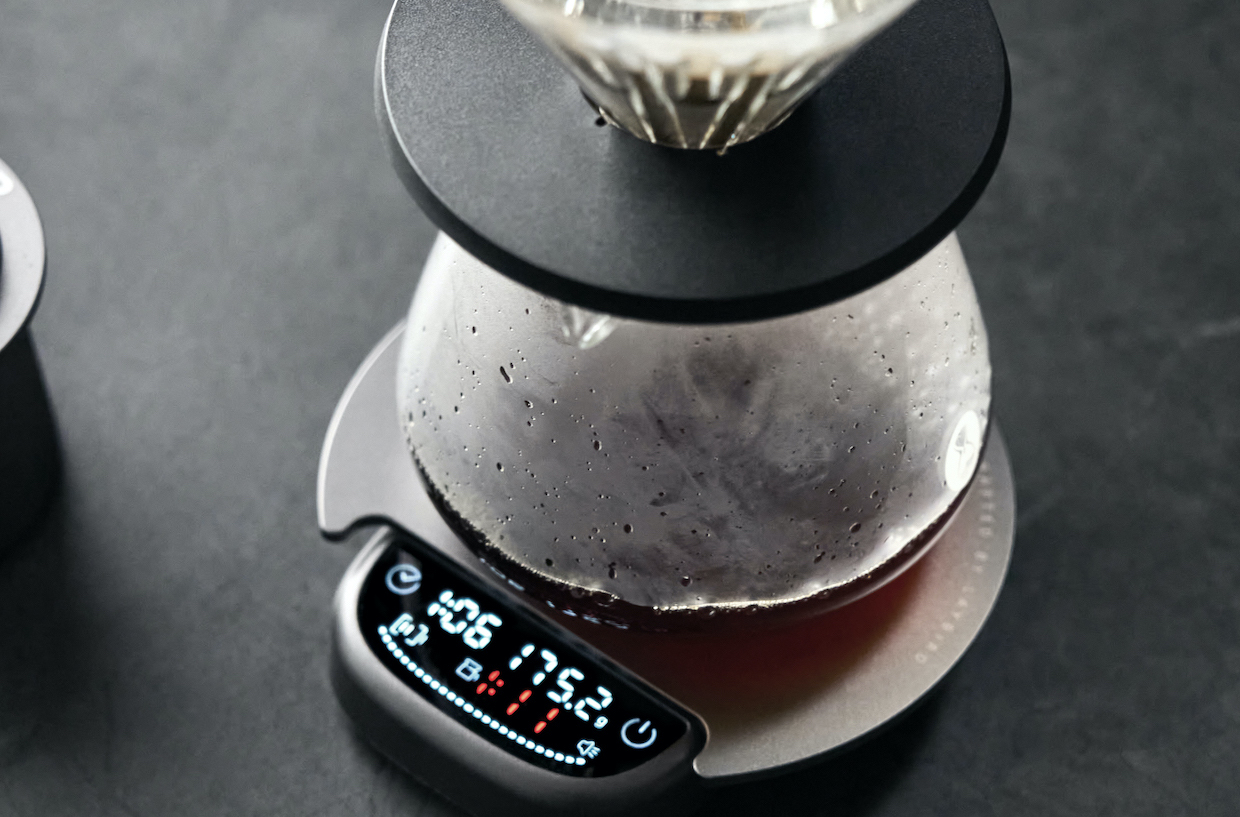The push to perfect extraction is relentless in specialty coffee. Professional and home baristas continuously seek to control different brewing variables, but in their quest to optimise flavour, they often overlook one of the most important factors: the drinking vessel itself.
Research reaffirms this. In 2018, Brazilian neuroscientist Dr. Fabiana Carvalho published a paper suggesting that cup shape influences not only our overall enjoyment of coffee but also how we perceive its aroma, sweetness, and acidity. Other studies have found that the weight, texture, and shape of coffee cups also significantly impact our sensory experiences.
I spoke with Daniel Baer, the founder and creative director of leading British tableware brand Monoware, to learn why the role of the cup in the coffee drinking experience needs to be a forethought.
You may also like our article on why cup design is important for baristas.


Enhancing the sensory experience
Coffee shops and consumers alike direct a razor-sharp focus on numerous variables that contribute to the perfect cup of coffee. These include post-harvesting methods, processing techniques, roast profiles, brewing methods, and water quality.
Many are aware that even minor adjustments to extraction variables, such as temperature, pressure, flow rate, and grind size distribution, have a significant impact on coffee flavours and aromas.
However, variables independent from extraction methods, such as the design of the drinking vessel, tend to receive less attention.
“People obsess over beans, grind size, and brew methods, but the vessel often tends to be an afterthought,” says Daniel Baer, the founder of Monoware, which designs premium tableware, including specialty coffee cups, and supplies to leading specialty cafés and roasteries, including Origin Coffee and WatchHouse.
“The cup is the final point of contact between the coffee and the drinker. If it’s poorly designed – too thick or thin at the rim, uncomfortable in the hand, or the material doesn’t retain heat well – it can undermine the entire sensory experience,” he adds.
Borrowing from other industries
Ahead of the coffee industry in this regard, the wine and beer industries have long recognised that different-sized and shaped serving vessels influence flavour perception. Sommeliers, for instance, are knowledgeable about how the shape of different wine glasses can enhance the sensory profiles of specific wines.
The optimal size and shape of the glass help concentrate the aromas specific to a certain type of wine. For example, glasses with smaller bowls complement white wines, while bigger glasses with wider openings pair best with lighter-bodied red wines.
“While wine and craft beer have had much longer to refine a shared language around glassware, specialty coffee is still in the earlier stages of that journey,” Daniel says. “But I believe the industry is already highly attuned to the impact of shape and form; there’s an increasing appreciation for how vessel design can elevate the sensory experience.”
Just as the right glass can improve and complement a wine’s flavour profile, the right cup can bring out the full expression of a coffee.
“Different coffee beverages, whether a short espresso or a milky cappuccino, each have their own distinct aromas, textures, and temperatures. A tailored cup can enhance those characteristics,” Daniel says. “Just as a wine glass is shaped to direct aromas and influence the palate, coffee cups should be designed with the same level of intention.”
Monoware designed its new Barista Collection with this in mind. Both the Cafe and Savour product lines consist of an Espresso Cup, a Flat White Cup, a Cappuccino Cup, and a Filter Cup, each offering the optimum size for its respective beverage. This helps maintain temperature, preserve crema or milk texture, and support pouring various latte art patterns.


How coffee cups influence flavour perceptions
The specialty coffee sector has greatly benefited from research across academia and various food and beverage industries on the impacts of multisensory cup design.
For example, studies show that cups with narrower openings may be more suitable for aromatic coffees. Sweeter and more acidic coffees may benefit from cups with wider mouths, which help enhance those qualities.
Coffee industry professionals are deepening their understanding of how certain types of coffee can shine in different cups. Prominent Norwegian roaster Tim Wendelboe, for instance, serves coffee in cups crafted to highlight the unique characteristics of each coffee, largely based on research that aroma and sweetness are more perceivable when drinking from round or bulbous-shaped vessels.
Meanwhile, in his 2023 World Barista Championship routine, runner-up Daniele Ricci used espresso cups featuring a high back and low front to heighten the retronasal experience. In other words, sipping from the front guides aromatic compounds into the nose.
Brands like Monoware are also leveraging cross-industry knowledge to create a multisensory coffee-drinking experience. The company’s new Barista Collection series includes the Cafe Cup, a traditional-shaped cup with a handle designed to fit comfortably in drinkers’ hands, and the Savour Cup, a minimalist, handle-less vessel designed for more mindful drinking.
Daniel explains that Monoware approached the design of this new series of stoneware coffee cups by seeking out how to improve everyday rituals.
“We collaborated with baristas throughout the design process, tested each prototype at home, and refined the shapes repeatedly,” he says. “Ultimately, we want to honour the effort that goes into every cup of coffee, with a cup that receives equal consideration.”


Finding the “right” cup
Beyond the importance of functionality and ergonomics, the optimal cup can elevate the daily ritual of drinking coffee.
“A well-designed cup can turn a rushed morning routine into a considered pause,” Daniel says. “It’s about more than function, though that’s essential. It’s about how the piece feels in your hand, how it enhances the aroma, and how it balances in use.
“When something is thoughtfully designed, it invites you to be present, even if just for five minutes.”
Both Monoware’s Cafe and Savour Cups share the same carefully designed body and were developed to enhance the flavour, aroma, and mouthfeel of coffee. The Cafe Cup features a handle, whereas the Savour Cup is held directly in the hand, catering to the different preferences of coffee drinkers.
“Some enjoy the tactile warmth of holding the cup in both hands, while others favour the classic feel of a handled design,” Daniel says. “It’s also an aesthetic choice: a handle-free cup might feel more at home in a modern interior, while the Cafe Cup, with its handle, recalls the familiarity of traditional settings.
“Both cups have a special internal curve to guide milk flow, making it easier for baristas to pour latte art,” he adds. “The handle offers a balanced, comfortable grip, and the cup’s stoneware body retains heat, keeping the drink at the right temperature for longer.”
Cups purposefully shaped for milk-based drinks can also dictate how much microfoam sits on top of the drink. For example, the cup’s design can help concentrate the microfoam for a frothy cappuccino or disperse the microfoam more evenly for a latte or flat white.
“The Cafe and Savour Cups both share the same carefully designed body, developed to enhance the flavour, aroma, and mouthfeel of the coffee,” says Daniel. “It’s not about which cup is better suited to a particular beverage, but rather which better suits the drinker’s preferred experience.”
Factoring in colour
Cup colour can influence how we perceive certain attributes of coffee. Pink, for example, can heighten perceptions of sweetness, while green and yellow may prime people to detect higher levels of acidity.
As a finishing touch, Monoware utilises colour and tactile elements to subtly influence the senses while drinking coffee. The Barista Collection’s natural colour palette allows flavour profiles to stand out. While bright colours can distract or compete visually with the coffee, neutral, earthy tones often complement it.
“The matte glaze softens reflections and creates a calming backdrop for the drink,” Daniel says.
Texture and weight play crucial roles in the tactile satisfaction of consumers. The Cafe and Savour cups are made from stoneware that adds weight without compromising ergonomics.
“They provide a tactile reminder to slow down and enjoy the moment,” Daniel says, allowing consumers to focus on the drinking experience.


Traditionally relegated to competitions and high-end coffee bars, more cafés and home baristas are recognising the value in pairing specific coffees with complementary cups.
By doing so, they can elevate the drinking experience and potentially open up the full spectrum of coffee flavour and aroma.
Enjoyed this? Then read our article on how different cup shapes influence coffee flavour.
Photo credits: Monoware
Perfect Daily Grind
Please note: Monoware is a sponsor of Perfect Daily Grind.
Want to read more articles like this? Sign up for our newsletter!










